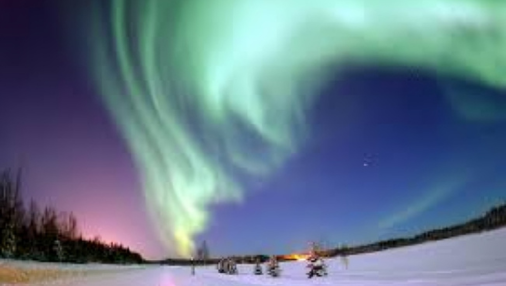Aurora Borealis: Nature’s Dazzling Light Show

Few natural wonders inspire awe like the Aurora Borealis, also known as the Northern Lights. For centuries, this spectacular light display has fascinated explorers, scientists, and dreamers alike. Appearing as glowing curtains or waves of green, pink, purple, and red across the night sky, auroras are not just beautiful—they’re also a window into the dynamic forces of Earth’s atmosphere and space.
What is the Aurora Borealis?
The Aurora Borealis occurs when charged particles from the Sun, carried by solar winds, collide with gases in Earth’s atmosphere. These particles, mostly electrons, are drawn toward the magnetic poles, where they interact with oxygen and nitrogen molecules high in the atmosphere.
- Oxygen produces green and red auroras.
- Nitrogen creates blue and purple hues.
The result is a shimmering natural light show that can stretch across the polar skies for hundreds of kilometers.
Historical and Cultural Significance
Different cultures have woven myths and legends around the Northern Lights:
- Norse mythology saw the aurora as reflections from the shields of the Valkyries.
- The Inuit people believed the lights were spirits playing in the sky.
- In some Indigenous traditions, auroras were seen as messages from ancestors.
These cultural stories remind us that the aurora is more than just a scientific phenomenon—it is also a deeply spiritual and artistic inspiration.
Where and When Can You See the Aurora?
The Northern Lights are most commonly visible in regions near the Arctic Circle, including:
- Norway, Sweden, Finland, and Iceland (popular for aurora tourism).
- Canada’s Yukon, Northwest Territories, and Nunavut.
- Alaska (USA).
The best time to see the aurora is during the winter months (September to March), when nights are longest and skies are darker.
Science Behind the Beauty
The Sun constantly emits solar wind, a stream of charged particles. During periods of heightened solar activity, such as solar flares or coronal mass ejections, more particles reach Earth’s atmosphere, resulting in more intense auroras.
Scientists use tools like the Kp index (a measure of geomagnetic activity) to predict aurora visibility. A higher Kp index means a stronger aurora that can be seen further south than usual.
Aurora Borealis vs. Aurora Australis
While the Northern Lights are famous, there is also the Aurora Australis (Southern Lights), visible in Antarctica, southern Australia, New Zealand, and parts of South America. Both occur through the same process, but in opposite hemispheres.
Tourism and Experience
Aurora tourism has become a thriving industry, drawing travelers who wish to witness the phenomenon firsthand. Popular experiences include:
- Northern Lights cruises in Norway.
- Glass igloos in Finland, where you can watch the lights from bed.
- Photography tours in Iceland and Canada.
Patience is key—auroras are unpredictable, and seeing them requires clear skies and some luck.
Photography and Technology
Capturing the Northern Lights has become easier with modern cameras and smartphones. To photograph auroras, photographers typically use:
- Long exposures (10–30 seconds).
- Wide-angle lenses.
- Sturdy tripods.
Impact on Science and Technology
Auroras are more than just stunning displays—they are linked to space weather. Strong geomagnetic storms that cause auroras can also disrupt GPS, satellites, and even power grids on Earth. Studying auroras helps scientists better understand the Sun’s influence on our planet.
Conclusion
The Aurora Borealis is a blend of art and science, myth and reality. It reminds us of our planet’s connection to the Sun and the cosmos. Whether you see it as a scientific marvel, a spiritual symbol, or a bucket-list adventure, the Northern Lights remain one of Earth’s most extraordinary natural wonders.
For those lucky enough to stand beneath the shimmering sky, the experience is unforgettable—like watching the universe paint with light.

